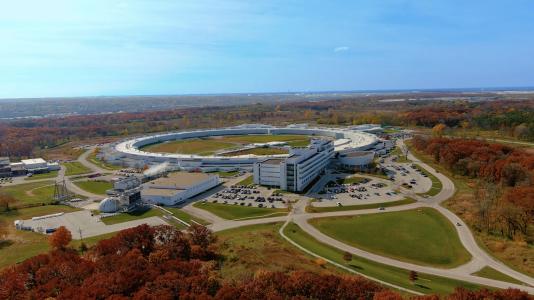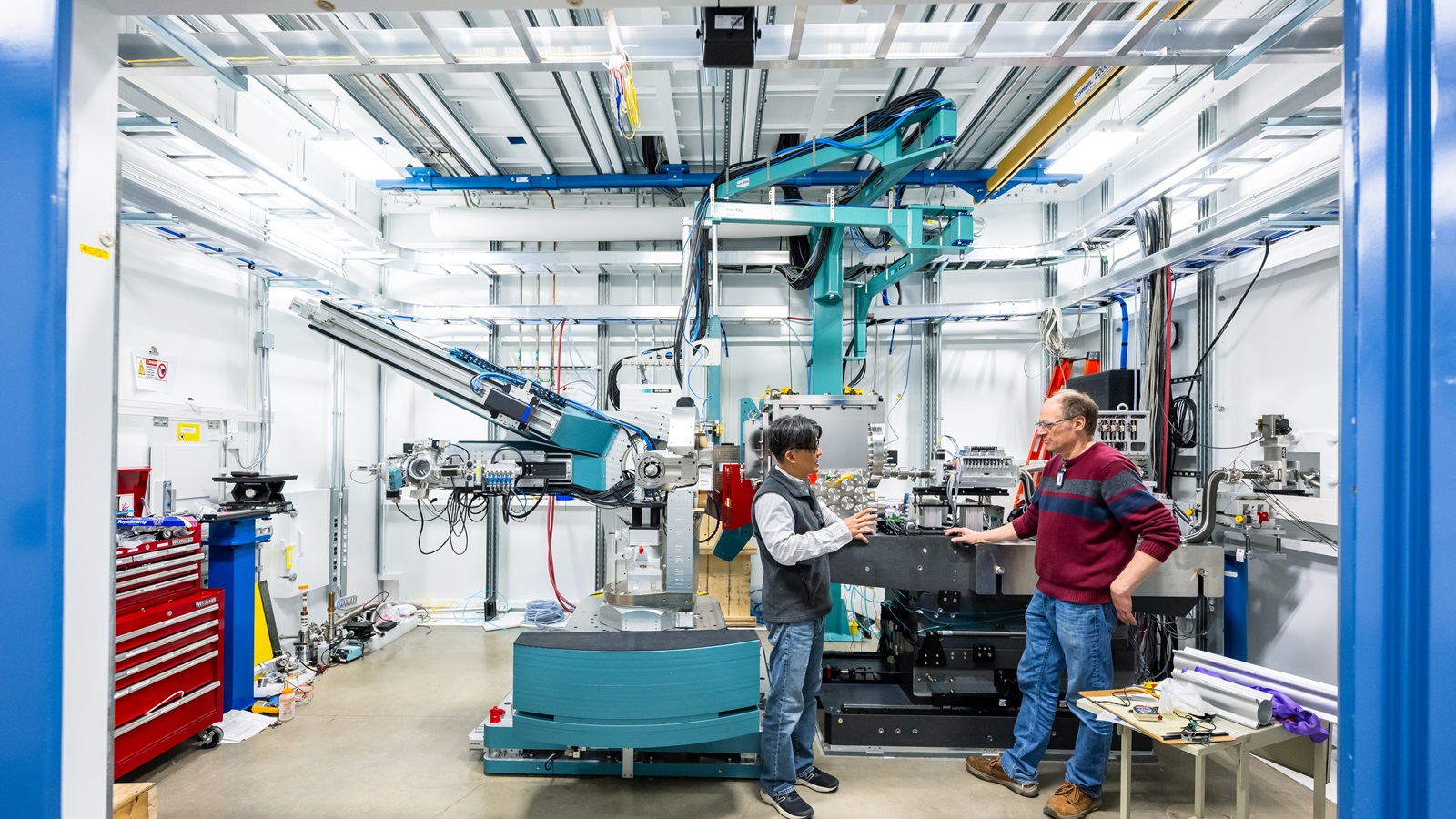In celebration of three decades since the APS saw its first light, here are 30 things you may or may not know about America’s premier X-ray light source

On March 26, 1995, a group of dedicated scientists and engineers at the U.S. Department of Energy’s (DOE) Argonne National Laboratory pressed some buttons and threw some switches, and the Advanced Photon Source (APS) sprang to life. After years of planning and construction, one of the premier synchrotron X-ray sources in the world — a DOE Office of Science user facility — had seen its first light.
The APS uses ultrabright X-ray beams to examine materials and systems at the atomic scale. In the ensuing 30 years, the facility enabled breakthroughs across the scientific spectrum and became one of the most productive light sources in the world. The APS is currently in the final stages of a comprehensive upgrade that has increased the brightness of its X-ray beams, lighting the way to advancements and discoveries we can only imagine now.


In honor of the 30-year anniversary of first light, here are 30 facts you may or may not know about the APS.
- The APS was the first high-energy third-generation synchrotron X-ray light source in the U.S.
- It is one of four DOE-funded synchrotrons in the U.S., including light sources at DOE’s Brookhaven National Laboratory, Lawrence Berkeley National Laboratory and SLAC National Accelerator Laboratory.
- The APS is owned and funded by the DOE’s Office of Science.
- Ground was broken for the future light source on June 4, 1990.
- The APS generates what is called synchrotron radiation. It does so by circulating a beam of electrons at nearly the speed of light and bending their trajectories with magnets. This results in the emittance of ultrabright X-rays.
- Scientists use those super-bright X-ray beams to study materials and systems in the physical and life sciences down to the atomic level.
- For years scientists considered synchrotron radiation an unwanted byproduct of studying electrons. It wasn’t until the 1950s that synchrotron X-rays were used as a research tool.
- The APS operates a series of particle accelerators to increase the energy of electrons. The beam begins in the linear accelerator, or linac, then moves to the particle accumulator ring and then to the booster, which gets the beam to its target energy.
- The largest of the particle accelerators at the APS is called a storage ring, and it maintains the energy of the electron beam, circulating it, focusing it, correcting its trajectory and using it to generate X-ray beams.
- The APS storage ring is roughly 2/3 of a mile around. It’s large enough to fit a major-league baseball stadium in the center of the ring.
- The first electrons made their way around the APS storage ring in February 1995.
- The APS pioneered a method of replenishing the electron beam in the storage ring called top-up. This method replenishes the ring with fresh electrons every few minutes as the circulating ones are gradually lost.
- The original APS ran for more than 25 years. It hosted more than 22,000 scientists from around the world, who collectively conducted an average of about 6,000 experiments per year, and who contributed to more than 37,000 peer-reviewed journal articles.
- Scientists at the APS have used it for all kinds of studies, but the most out-of-this-world might be the research into the structure and chemical composition of dust collected from a nearby asteroid.
- X-rays are delivered to scientific experiment stations called beamlines situated around the ring at the APS, and each one uses the facility’s X-ray beams in a slightly different way.
- There are essentially three types of X-ray experiments conducted at the APS: imaging, diffraction and spectroscopy. Imaging allows you to see samples directly, diffraction captures information about those samples as light bounces off them, and spectroscopy gives you the chemical makeup of the sample.
- The APS is the most productive contributor to the Worldwide Protein Databank, a global repository of structural information about protein.
- In a typical year, the APS hosts roughly 5,500 visiting scientists to conduct research.
- APS data was used in three research projects that were awarded the Nobel Prize in chemistry. The prizes were awarded in 2009, 2012 and 2024.
- The Advanced Photon Source Upgrade is an $815 million project to completely revitalize the APS with the latest accelerator and beamline technology. The result is X-ray beams that are up to 500 times brighter.
- The upgrade required a one-year shutdown to remove the original storage ring and replace it with a state-of-the-art accelerator. That shutdown began in April 2023.
- The new APS storage ring is made up of 1,321 powerful electromagnets. Among other things, it requires 1.5 miles of copper busbar conductors, 32 miles of power cable, 8 miles of diagnostic cable and 20 miles of optical fiber.
- The vacuum system of the new APS storage ring surrounds the electron beam and replicates the vacuum of space.
- The completed new storage ring weighs about 6 million pounds.
- It’s a tradition that the final section of a storage ring to be installed is signed by the team behind the project. The signed section of the original APS was removed in June 2023 after 29 years in the storage ring tunnel.
- Likewise, the signed module of the new APS — and final one installed — went into the tunnel in December 2023.
- The first electrons circulated in the new storage ring in April 2024.
- The upgraded APS has achieved a world record — its electron beam has the lowest horizontal emittance in the world. Lower emittance means more electrons packed into a smaller and less divergent beam, producing brighter X-ray beams.
- The upgraded APS, when completed, will have nine new beamlines that are optimized for the brighter and more coherent (synchronized) X-ray beam, alongside numerous enhanced ones. In total, the upgraded APS will have 72 beamlines for research.
- The future of the APS — and of X-ray science — is bright.
